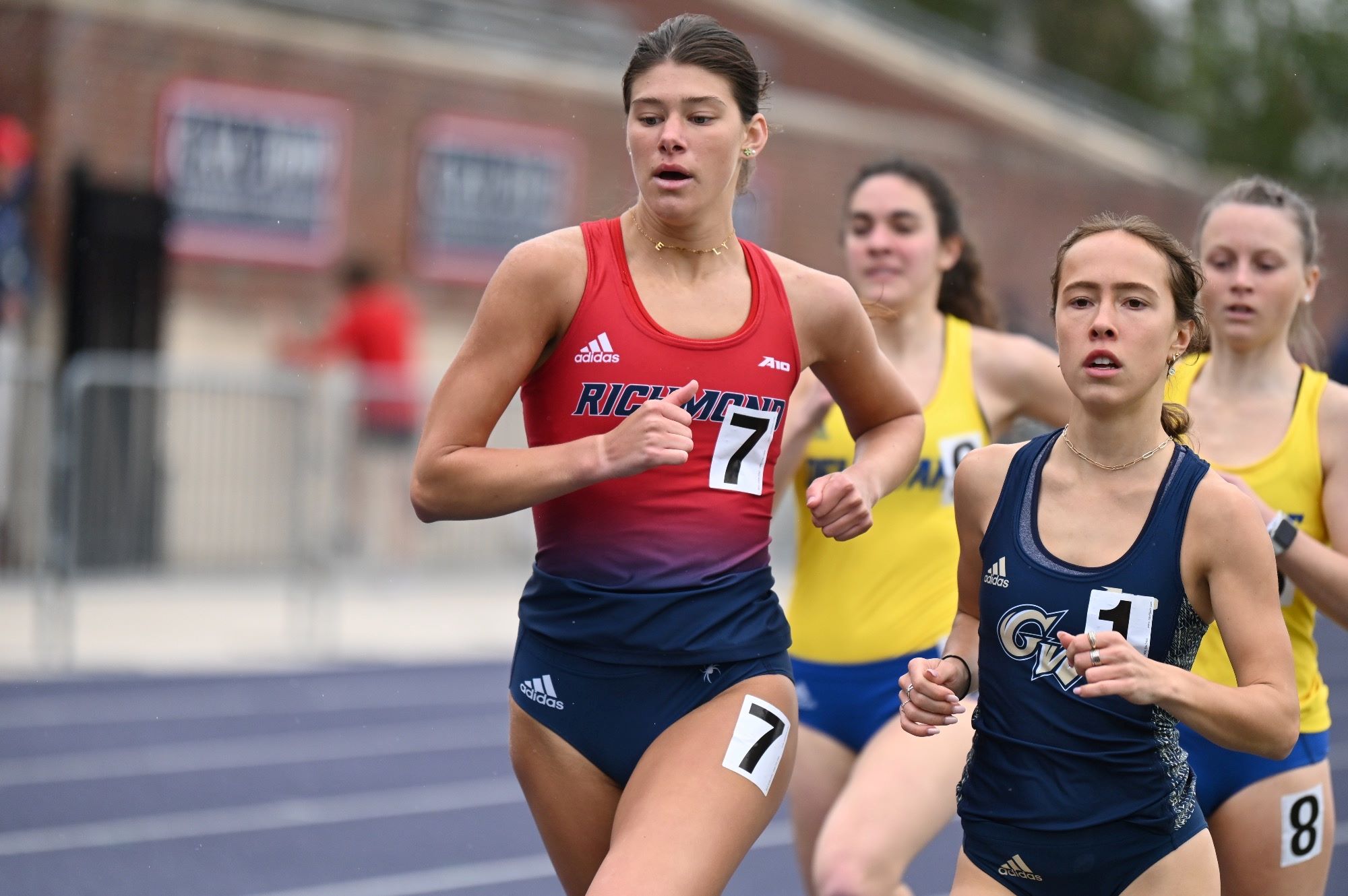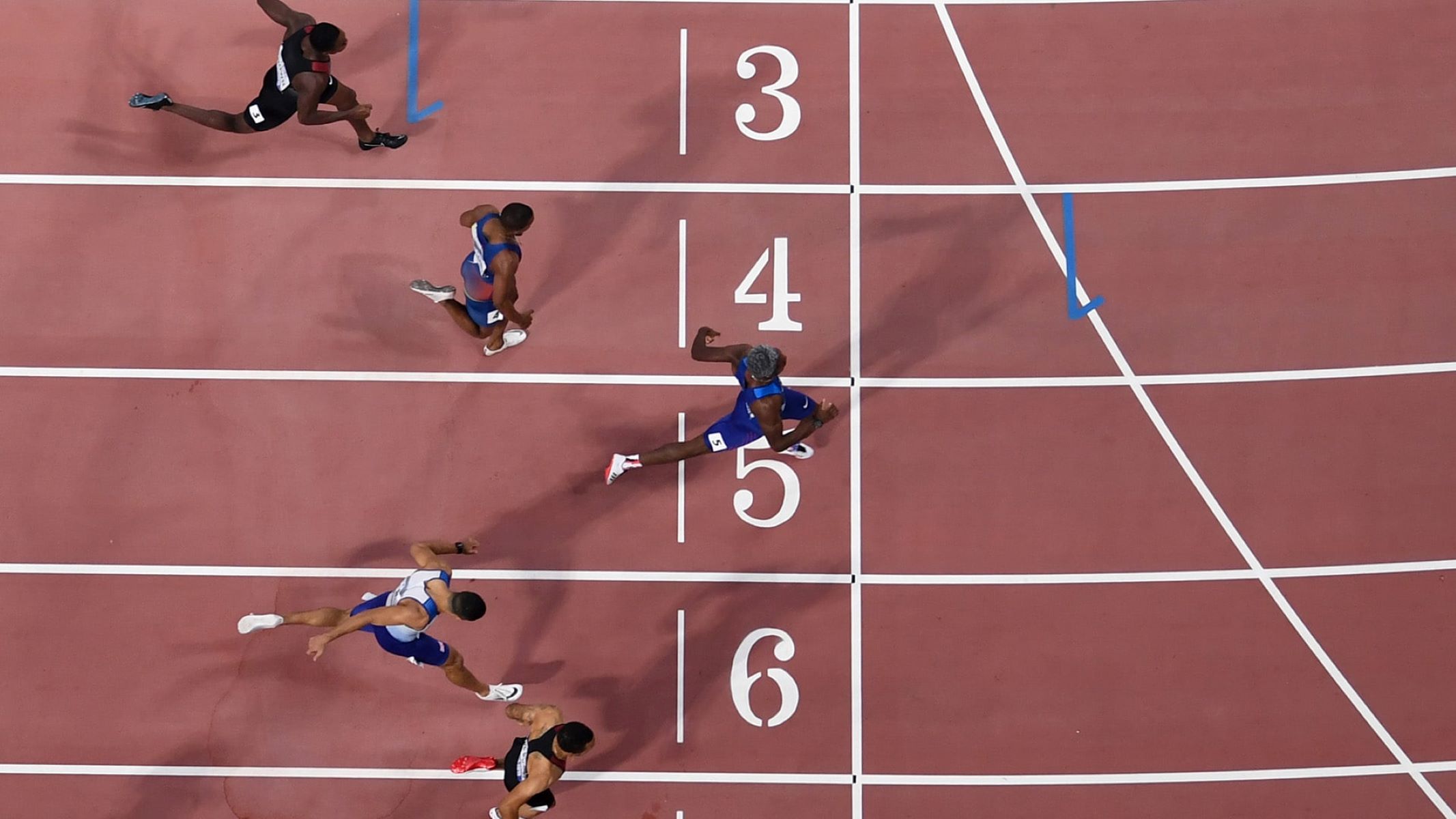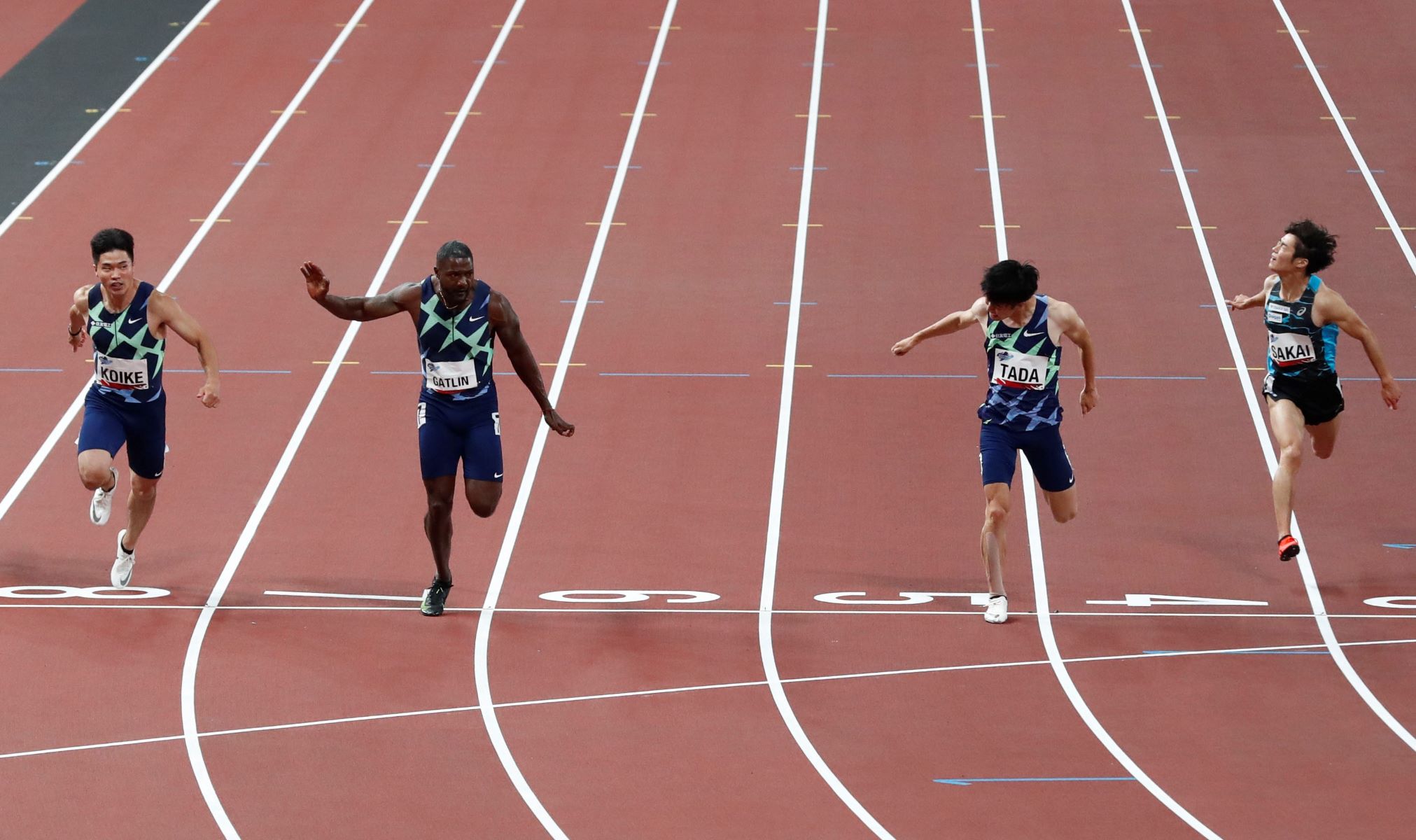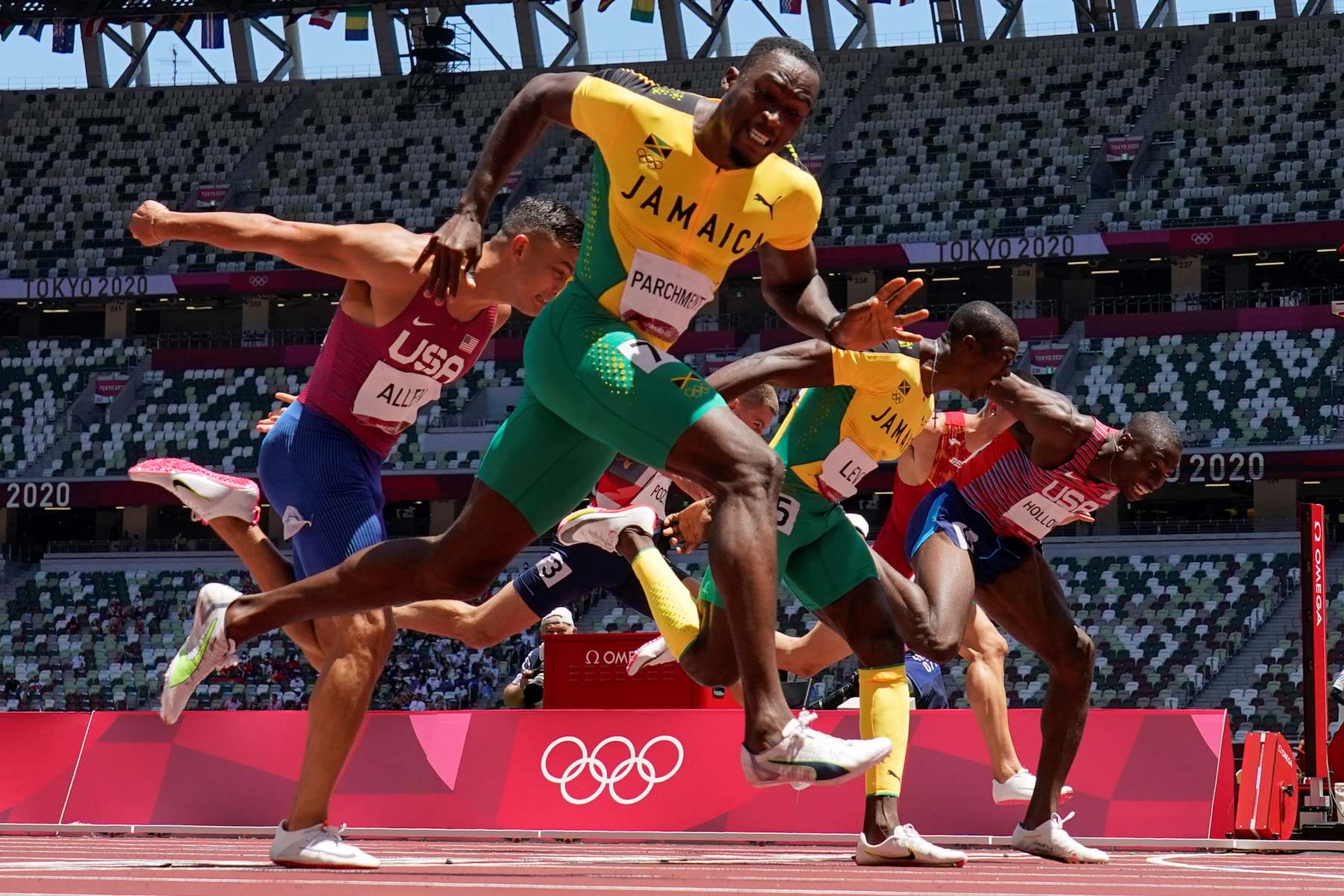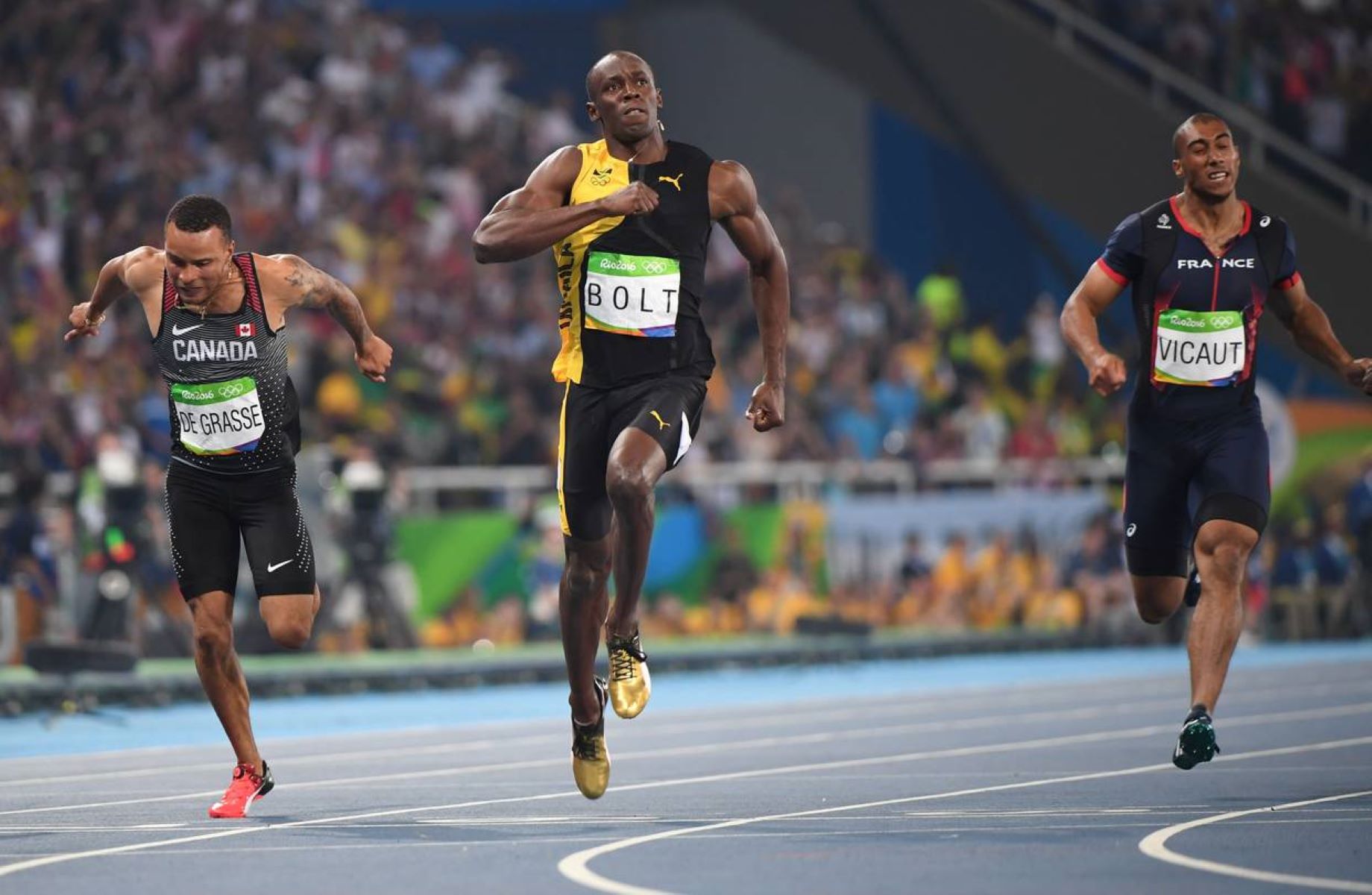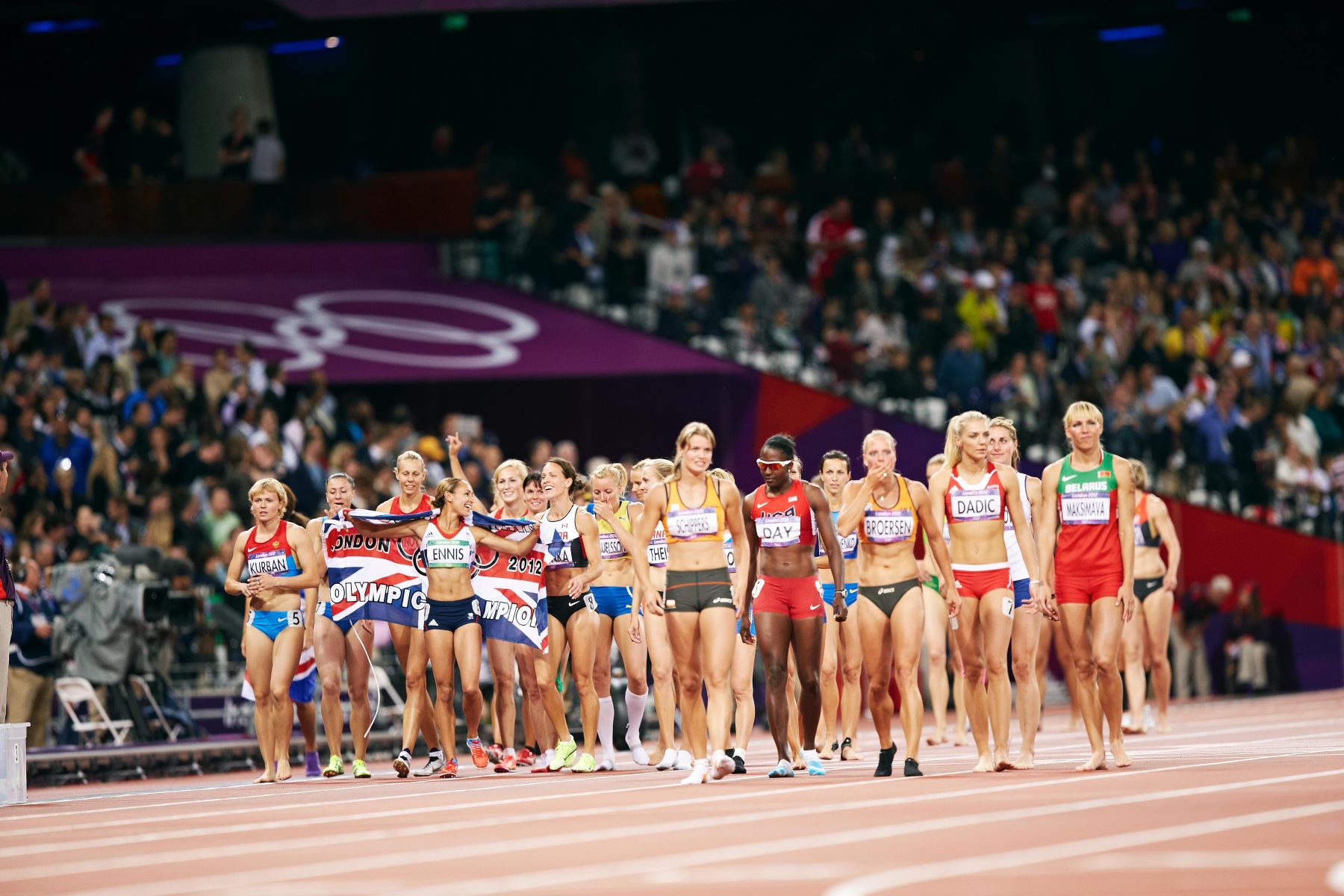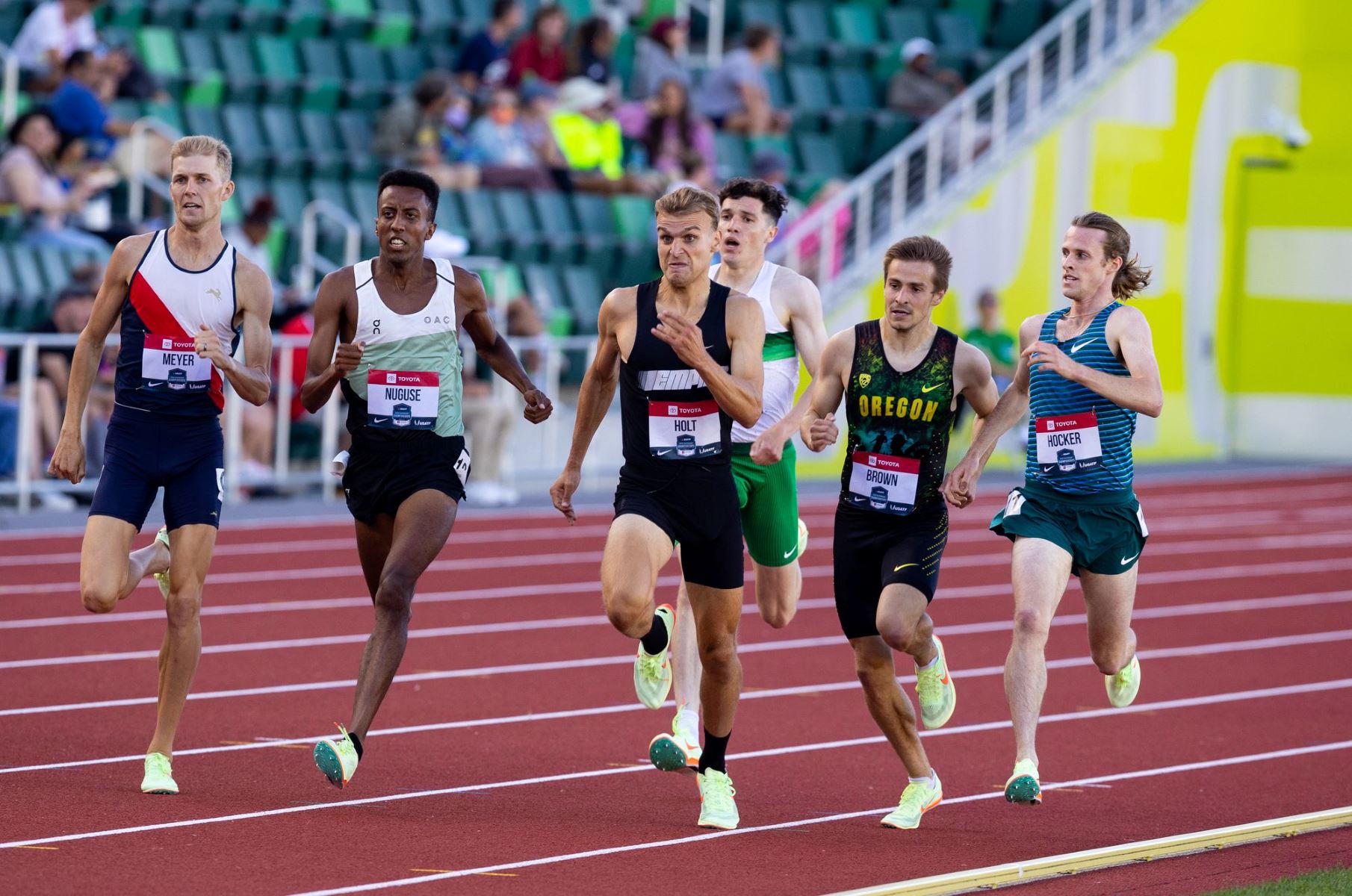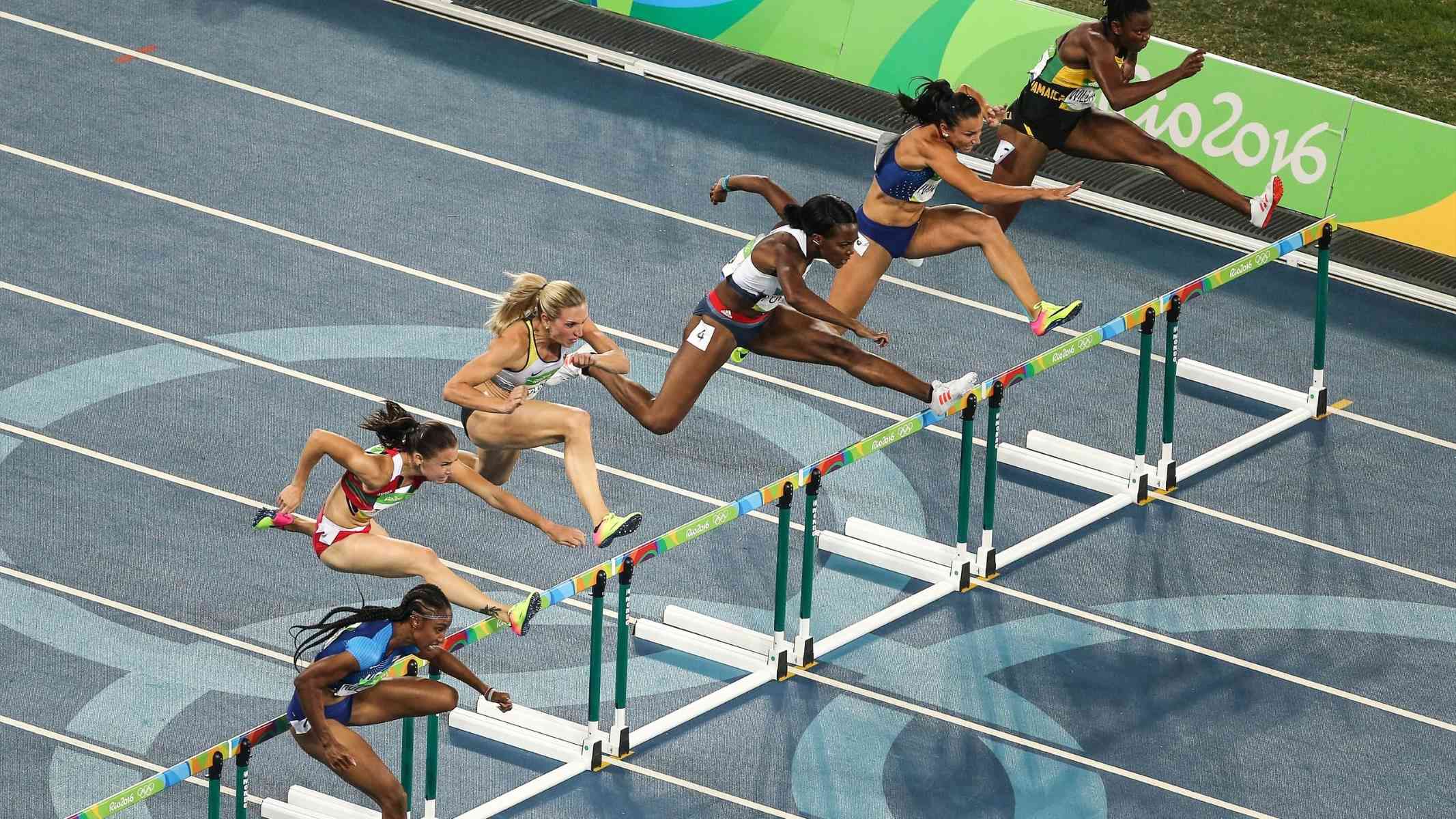Home>Misc>Featured>When Does Track And Field Start For The Olympics
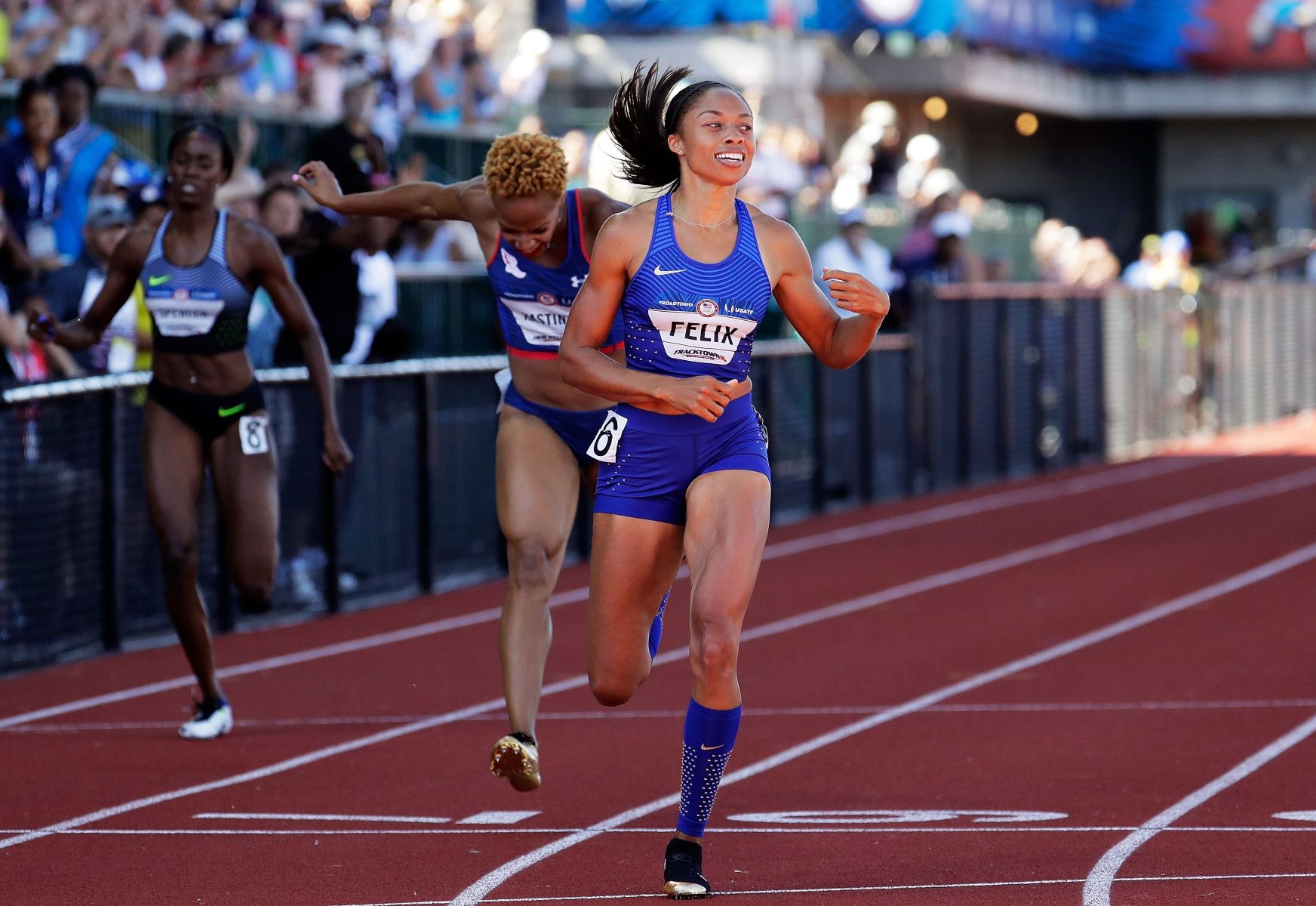

Featured
When Does Track And Field Start For The Olympics
Published: September 15, 2023
Get all the latest updates on when track and field events start for the Olympics. Stay informed with this featured article.
Introduction
When it comes to the Olympic Games, one of the most highly anticipated and thrilling events is track and field. Dating back to ancient times, track and field has been an integral part of the Olympics, showcasing the extraordinary athletic abilities of individuals from around the world. From sprinting and jumping to throwing and distance running, track and field offers a diverse range of events that captivate both athletes and spectators.
The history of track and field in the Olympics is rich and storied. The origins can be traced back to the ancient Greek Olympic Games where athletes competed in disciplines such as the stade race, long jump, and discus throw. It was in 1896, when the modern Olympic Games were inaugurated, that track and field made its official return to the global stage. Since then, it has become one of the most prestigious and well-known sports in the Olympic program.
The qualification process for Olympic track and field events is a rigorous and competitive journey for athletes. To secure a spot in the Games, athletes must meet specific entry standards set by the International Association of Athletics Federations (IAAF). These standards ensure that only the best athletes in each event are able to compete at the Olympics, raising the level of competition and showcasing the pinnacle of athletic achievement.
The schedule and venue of Olympic track and field events vary from one Olympic Games to another. The venues are carefully selected to provide athletes with optimal conditions to perform at their best. From iconic stadiums such as the Olympic Stadium in Berlin to elaborate temporary structures like the Bird’s Nest in Beijing, each venue adds its own unique atmosphere to the track and field events.
Throughout its history, Olympic track and field has witnessed incredible moments of triumph, heartbreak, and record-breaking performances. From Jesse Owens’ four gold medals in 1936 to Usain Bolt’s electrifying sprints in the 2008 and 2012 Olympics, these events have created lasting memories and inspired generations of athletes to push the boundaries of human potential.
The importance and impact of Olympic track and field extends beyond the realm of sports. It serves as a symbol of unity, bringing together athletes from diverse backgrounds to compete on an equal playing field. It showcases the power of perseverance, determination, and the pursuit of excellence. Additionally, the Olympics serve as a platform to promote sportsmanship, cultural exchange, and international cooperation.
With its rich history, intense competition, and powerful symbolism, track and field has rightfully earned its place as one of the marquee events in the Olympic Games. It continues to captivate audiences worldwide, drawing in millions of viewers and inspiring future generations of athletes to reach for greatness. As the pinnacle of the athletic world, Olympic track and field holds a special place in the hearts of sports enthusiasts and stands as a testament to the incredible power of human performance.
History of Track and Field in the Olympics
The history of track and field in the Olympics spans thousands of years, with its origins deeply rooted in ancient Greece. In the ancient Olympic Games, which were first held in 776 BCE, track and field events were the centerpiece of the athletic competition.
Athletes from various city-states would gather every four years in Olympia to compete in events such as the stade race, a short sprint measuring 180 meters, and the diaulos, a middle-distance race covering approximately 400 meters. Other events included the long jump, discus throw, and javelin throw.
These ancient Olympic Games held a significant cultural and religious importance, emphasizing the pursuit of physical excellence and honoring the gods. Winners of the Olympic events were revered as heroes and were often celebrated with laurel wreaths and statues erected in their honor.
After an interruption of over a millennium, the Olympic Games were revived in 1896 in Athens, Greece. Baron Pierre de Coubertin, the founder of the modern Olympic Games, sought to bring back the spirit of the ancient Games and include a wide range of athletic disciplines, including track and field.
The inclusion of track and field events in the modern Olympics marked an important milestone for the sport’s development and popularity. Over the years, new events were added to the program, reflecting the growth and evolution of track and field as a global sport.
One of the most significant moments in Olympic track and field history came in 1936 in Berlin, Germany. American sprinter Jesse Owens, an African-American athlete, defied racial stereotypes and won four gold medals in the 100 meters, 200 meters, long jump, and 4×100 meters relay. His achievements stood as a powerful symbol of triumph over adversity and showcased the universality of athletic excellence.
Since then, track and field in the Olympics has continued to captivate audiences with legendary performances and world records. Usain Bolt, often regarded as the greatest sprinter of all time, stole the show in the 2008 and 2012 Olympics, winning a total of six gold medals and setting new world records in the 100 meters, 200 meters, and 4×100 meters relay.
The history of track and field in the Olympics is not without challenges and controversies. Throughout the years, issues such as doping and disqualifications have marred the sport’s reputation. However, efforts have been made by organizations like the International Olympic Committee (IOC) and the IAAF to maintain the integrity of track and field and ensure fair competition.
Today, track and field remains a staple of the Olympic Games, showcasing the pinnacle of human athleticism and providing athletes with an opportunity to compete on the world stage. With its rich history and continuous evolution, track and field in the Olympics stands as a testament to the enduring appeal and universal spirit of sport.
Qualification Process for Olympic Track and Field
The qualification process for Olympic track and field events is a rigorous and highly competitive journey for athletes. The goal is to ensure that only the best athletes in each event earn the opportunity to represent their countries at the Games.
The qualification process is overseen by the International Association of Athletics Federations (IAAF), the governing body for track and field. The IAAF establishes specific entry standards that athletes must meet in order to be considered for selection.
To qualify for the Olympic track and field events, athletes must achieve the Olympic qualifying standard within a specified qualifying period. The qualifying period is typically set by the IAAF and varies from event to event.
The Olympic qualifying standard is typically based on the average performance of the top athletes in each event during a specific period leading up to the Games. The standard serves as a benchmark, ensuring that athletes are capable of meeting a certain level of performance.
In addition to achieving the qualifying standard, athletes must also comply with other eligibility criteria set by their respective national Olympic committees. These criteria may include citizenship requirements, age restrictions, and adherence to anti-doping regulations.
The process of qualifying for the Olympics starts at national and regional championships where athletes compete against their peers to secure a spot on their national team. National Olympic committees then review the performances of these athletes and make their selections based on a combination of qualifying standards, rankings, and potential for success at the Games.
For some events, such as the marathon and race walk, additional criteria may be in place. These events often require athletes to participate in specific qualifying races or meet certain time standards in designated competitions.
In some cases, if an athlete doesn’t meet the qualifying standard, they may still have the opportunity to compete if they receive a wildcard entry. These wildcards are typically reserved for exceptional cases or to ensure a diverse representation of nations in the competition.
The qualification process for Olympic track and field events is not without controversy. In recent years, there have been debates about the fairness of the qualifying standards and the potential exclusion of talented athletes who may not have had the opportunity to compete in events that meet the criteria.
Despite the challenges and complexities of the qualification process, it serves as a means to elevate the level of competition at the Olympics and ensure that only the most deserving athletes have the chance to compete on the global stage. It is a testament to the commitment, dedication, and hard work that athletes must put in to earn their place among the world’s best in track and field.
Schedule and Venue of Olympic Track and Field Events
The schedule and venue of Olympic track and field events are carefully planned to provide athletes with optimal conditions to showcase their talents and achieve their best performances. The venues selected for these events are iconic and play a significant role in creating a memorable and inspiring atmosphere for both the athletes and spectators.
The schedule of Olympic track and field events is spread out over several days, allowing athletes from different disciplines to compete on different days and receive ample rest between events. This ensures that athletes have the opportunity to perform at their peak and avoid unnecessary fatigue.
The events are typically scheduled to take place in the second week of the Olympic Games, following the opening ceremony and the completion of other sports competitions. This arrangement allows track and field to be one of the marquee events, drawing significant attention from global audiences.
The venues chosen to host Olympic track and field events are carefully selected based on various factors such as infrastructure, capacity, historical significance, and the ability to provide optimal track and field conditions. These venues often become iconic symbols of the Games.
One of the most remarkable venues in Olympic track and field history is the Olympic Stadium in Berlin, Germany. Built for the 1936 Olympics, this stadium hosted legendary performances by athletes like Jesse Owens, who won four gold medals in sprinting and long jump. The stadium, with its grand architecture and historical significance, remains a symbol of athletic excellence.
Another notable venue, the Bird’s Nest Stadium in Beijing, China, hosted the track and field events during the 2008 Olympics. Designed with a unique architectural structure, it not only provided top-notch facilities but also offered a visually stunning backdrop for the competitions.
In recent years, temporary venues have also been established to accommodate the growing number of spectators and to meet the specific requirements of Olympic track and field events. These temporary structures are carefully designed and constructed to meet the necessary standards for track surfaces, equipment, seating, and other essential facilities.
The schedule and venue of Olympic track and field events are closely intertwined, working in harmony to create an electrifying atmosphere for the athletes and spectators. Athletes have the opportunity to compete in iconic venues where their performances become part of Olympic history, while spectators witness incredible displays of athleticism and witness world records being broken.
As the Games continue to evolve, future editions may introduce new venues and adaptations to cater to the expanding scope of track and field events. The goal is to provide the best possible experience for both the athletes and the audience, ensuring that Olympic track and field remains one of the most memorable and captivating events in the Olympic program.
Notable Track and Field Events in Olympic History
Olympic track and field events have produced countless memorable moments that have captured the world’s attention and etched their mark in the annals of sports history. From record-breaking performances to upsets and displays of extraordinary athleticism, these events have showcased the best of the best competing on the grandest stage.
One of the most iconic and historic events in Olympic track and field is the men’s 100 meters sprint. Known as the “blue riband event,” this race has seen some of the fastest humans on Earth battling it out for glory. Usain Bolt, the Jamaican sprinting legend, dazzled the world with his extraordinary speed and showmanship, winning three consecutive Olympic gold medals in 2008, 2012, and 2016, and setting world records along the way.
The men’s long jump event has also delivered unforgettable moments. In 1968, American athlete Bob Beamon shattered the world record with a mind-boggling jump of 8.90 meters at the Mexico City Olympics. This extraordinary leap surpassed the existing record by an astonishing 55 centimeters and stood as the world record for 23 years.
In the women’s events, Florence Griffith-Joyner, commonly known as Flo-Jo, left an indelible mark on Olympic track and field. At the 1988 Olympics in Seoul, South Korea, she sprinted her way to three gold medals in the 100 meters, 200 meters, and 4×100 meters relay. Her world records in the 100 meters (10.49 seconds) and 200 meters (21.34 seconds) still stand to this day, making her the fastest woman in history.
Another remarkable moment in Olympic track and field history came in 1996 when Michael Johnson of the United States achieved an unprecedented double in the 200 meters and 400 meters. Not only did he win both events, but he also set new world records in each race, solidifying his status as one of the greatest sprinters of all time.
It is impossible to mention notable track and field events without highlighting the women’s marathon at the 1984 Los Angeles Olympics. Joan Benoit, an American runner, claimed the first-ever Olympic gold medal in the women’s marathon. This groundbreaking event paved the way for women’s distance running to garner the recognition and respect it deserved.
These are just a few examples of the outstanding moments that have unfolded in Olympic track and field history. From iconic world records to emotional comebacks and underdog victories, these events serve as a testament to the tenacity, skill, and sheer determination of athletes pushing the boundaries of human potential.
The impact of these events extends far beyond the sport itself, inspiring future generations of athletes and captivating audiences around the globe. They embody the essence of the Olympic Games and serve as a reminder of the incredible feats that can be achieved through hard work, dedication, and a relentless pursuit of excellence.
Importance and Impact of Olympic Track and Field
Olympic track and field holds immense importance and has a profound impact on both the sporting world and society at large. It serves as a catalyst for inspiration, unity, and the promotion of athletic excellence.
One of the key roles of Olympic track and field is to inspire and motivate individuals around the world. Athletes competing in these events are seen as role models, embodying the values of hard work, discipline, and perseverance. Their extraordinary performances inspire people of all ages to pursue their own athletic dreams and strive for greatness.
Through its universality, Olympic track and field brings nations together on a common platform. Athletes from diverse backgrounds and cultures compete against each other, fostering a sense of camaraderie and mutual respect. It showcases the power of sports to bridge gaps, break down barriers, and promote peace and understanding.
Furthermore, Olympic track and field plays a significant role in promoting health and physical fitness. The events and the achievements of the athletes serve as a powerful reminder of the importance of an active lifestyle and the benefits of regular exercise. By showcasing the incredible physical capabilities of the human body, track and field inspires people to lead healthier lives and participate in sports.
The impact of Olympic track and field extends beyond the arenas and stadiums. It has the ability to captivate audiences globally, drawing millions of viewers and fans who are inspired by the thrill and drama of the competitions. This level of exposure generates interest and enthusiasm for the sport, leading to increased participation and support at all levels.
The Olympic track and field events also provide an opportunity for countries to showcase their sporting prowess and national pride. Success in these events contributes to a nation’s reputation and standing on the global stage. It reinforces national identity and unity as athletes compete under their country’s flag, representing their people and heritage.
Moreover, Olympic track and field has a significant economic impact on host cities and countries. The Games attract tourists, sponsors, and media attention, creating jobs, boosting local businesses, and stimulating economic growth. The infrastructure and facilities built for these events often leave a lasting legacy for the host city, benefiting the community long after the Games have concluded.
Lastly, the Olympic track and field events serve as a platform for innovation and advancements in sports science and technology. The pursuit of improved performance pushes the boundaries of human potential and leads to advancements in training methods, equipment, and sports medicine. These innovations have a ripple effect, benefiting athletes in various sports disciplines and contributing to the overall development of sports.
Overall, Olympic track and field carries immense importance and impact. It inspires, unifies, promotes health, showcases athleticism, fosters national pride, and drives economic growth. As one of the premier events in the Olympic program, track and field stands as a testament to the transformative power of sports and the enduring spirit of the Olympic movement.
Conclusion
Olympic track and field is a sport that captures the hearts and minds of millions around the world. With its rich history, intense competition, and powerful symbolism, it stands as one of the most highly anticipated and watched events in the Olympic Games.
The history of track and field in the Olympics dates back to ancient times, where athletes showcased their athletic abilities in disciplines like sprinting, jumping, and throwing. Since the modern revival of the Games in 1896, track and field has become a staple of the Olympic program, bringing together the best athletes from around the world to compete on a global stage.
The qualification process for Olympic track and field is rigorous, ensuring that only the most deserving and talented athletes earn the opportunity to compete. The schedule and venue of these events are carefully planned to provide optimal conditions for athletes to showcase their skills and achieve their best performances.
Olympic track and field has witnessed numerous remarkable moments throughout history. From record-breaking performances by athletes like Usain Bolt and Florence Griffith-Joyner to historic achievements like the first women’s marathon, these events have captivated audiences and left a lasting impact on the sport.
Above all, the importance and impact of Olympic track and field extend beyond the realm of sports. It serves as a source of inspiration and motivation, promoting unity and cultural exchange among nations. It highlights the value of an active and healthy lifestyle and leaves a lasting legacy for host cities and countries.
As we look to the future, Olympic track and field will continue to evolve, embracing innovation and pushing the boundaries of human potential. It will serve as a reminder of the incredible capabilities of the human body and the enduring value of athletic excellence.
So, whether it’s the exhilarating display of speed in the 100 meters sprint, the awe-inspiring technique in the long jump, or the endurance exhibited in the marathon, Olympic track and field will always hold a special place in the hearts of sports enthusiasts and athletes alike. It represents the pinnacle of human performance and stands as a shining example of the power and beauty of sport.
